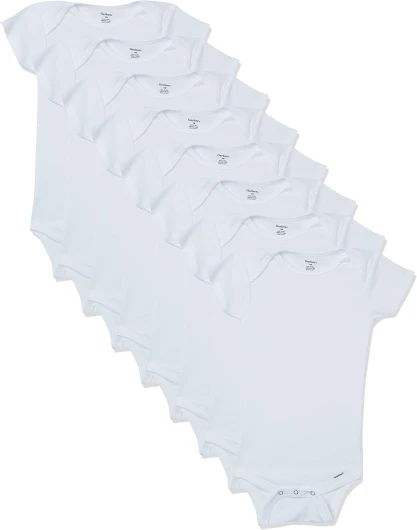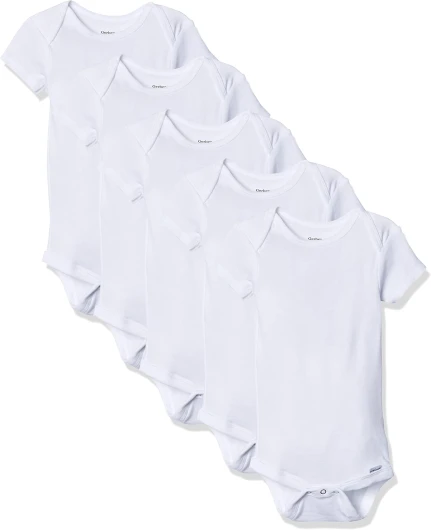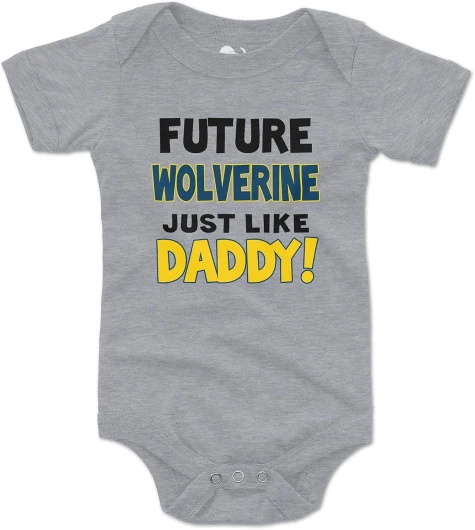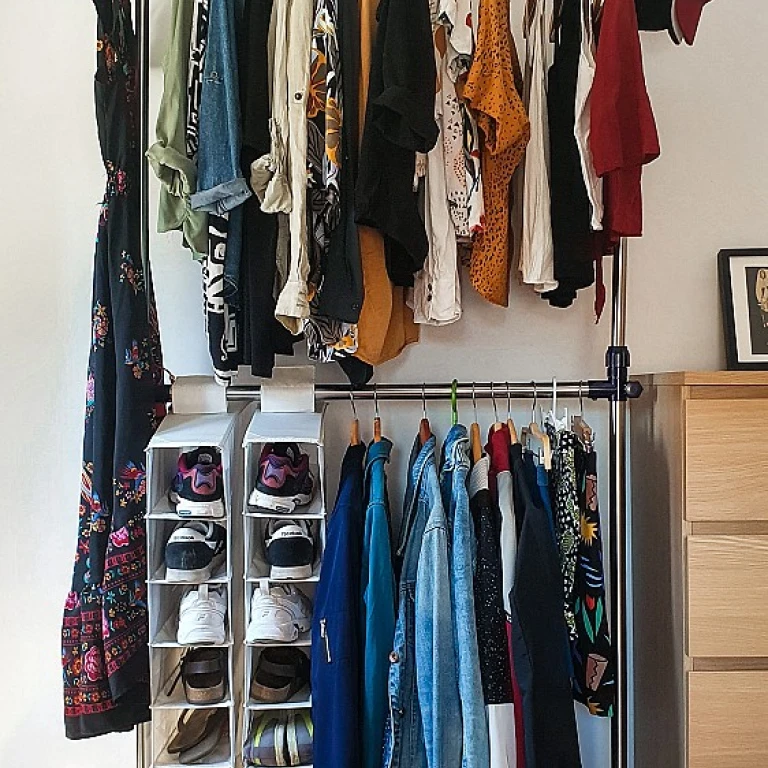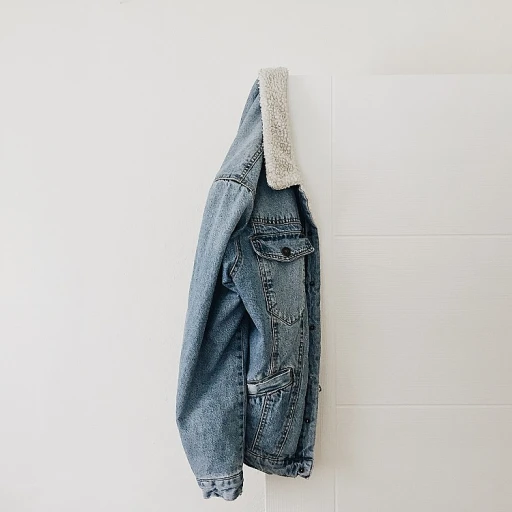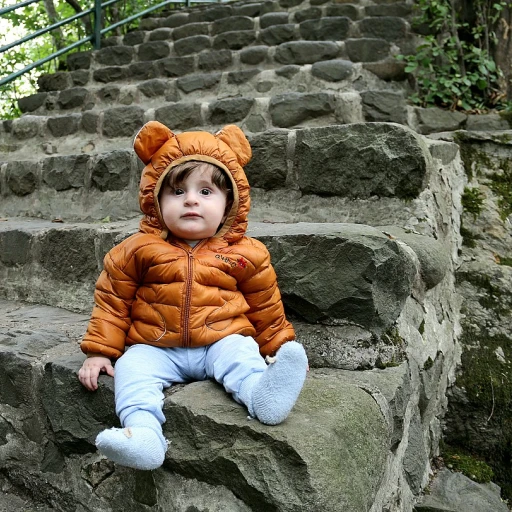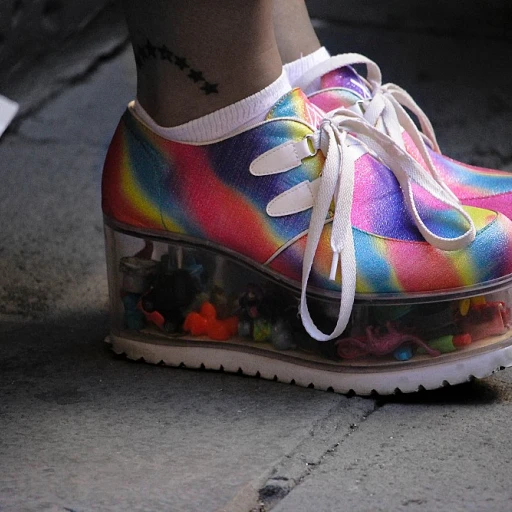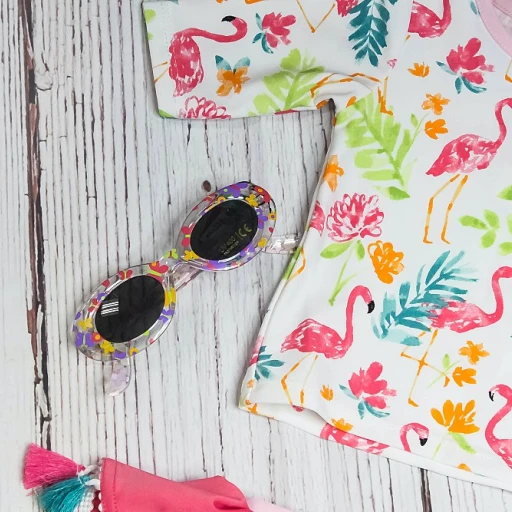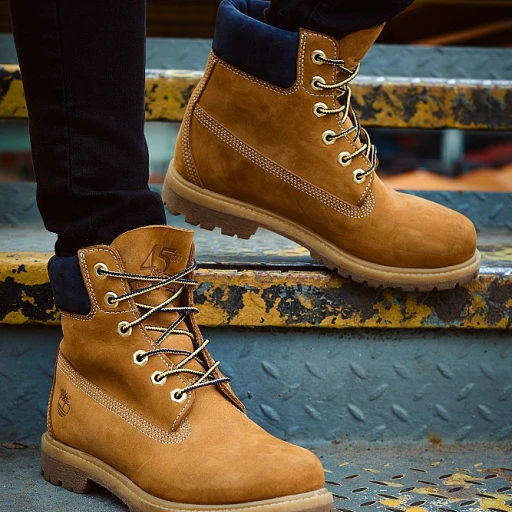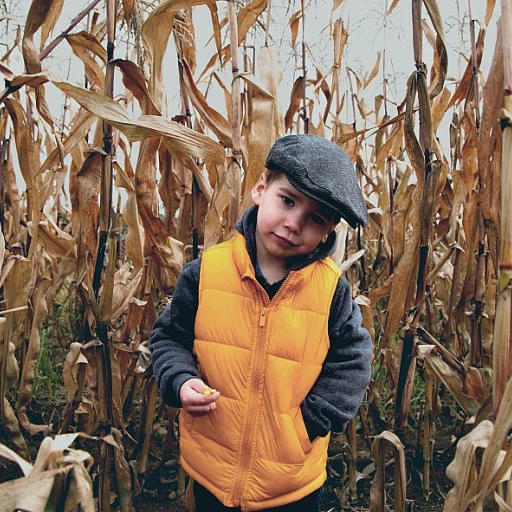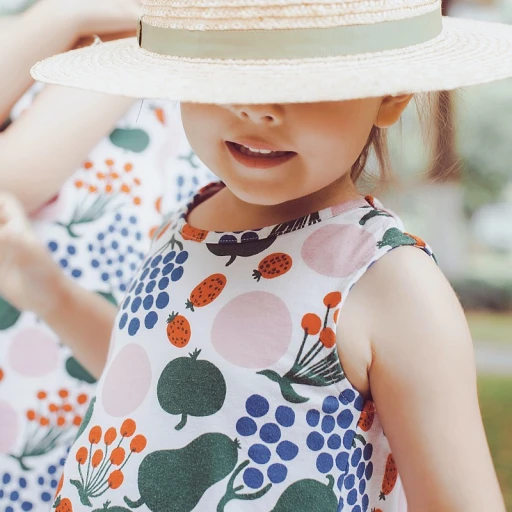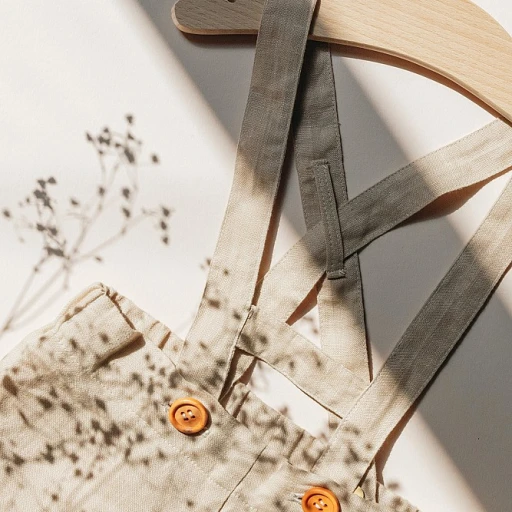
What is size 68 in baby clothes?
Understanding the mysterious size 68
size 68 in baby clothes can seem like a puzzle at first, especially for new parents. But fear not, it's simpler than you think. size 68 is typically designated for babies around 6 months old. It equates roughly to a baby's length of 68 centimeters, hence the name.
This sizing is a standard European measure. The number 68 represents the length of your baby from head to toe. While other international measurements might rely on weight, in Europe, it's all about the height.
Why size 68 matters
Knowing that your baby's size in centimeters helps in grabbing the right fit. No more guessing games or returns. Babies' growth rates vary a lot, so using length can be a more accurate gauge.
For accurate measurements, always keep in mind a slight variation - some clothing brands might interpret sizes differently, so the size chart remains crucial. You can refer to this detailed guide on how to wash baby clothes to maintain them well.
Demystifying size 68 for parents
If you’re new to parenthood, understanding these numbers gets less confusing with experience. Having multiple size charts at your disposal is beneficial. The sweet spot of size 68 ensures comfort for babies, allowing room for movement but not too big to cause discomfort.
So, next time you're out shopping for your little one, or perhaps adding to that baby shower gift list, know that size 68 is a pretty good bet for 6-month-olds. It saves you the hassle and puts a smile on everyone's face.
Age and weight guidelines for size 68
Understanding the age and weight guidelines for size 68 in baby clothes
The world of baby clothes can sometimes be like learning a new language. Specifically, understanding sizes and what they mean for your little one’s age and weight can be a challenge. Size 68, though, is quite straightforward once you get the hang of it. Size 68 typically fits babies who are around 4 to 6 months old. While this is a general guideline, every baby is unique and grows at their own pace.Age range
Research and expert guidelines indicate that size 68 clothes are designed for babies who are generally between 4 to 6 months old. According to the American Academy of Pediatrics (AAP), the average weight of a baby in this age range is between 14 and 18 pounds (6.4 to 8.2 kg). Furthermore, during this period, babies are usually measuring between 24 and 27 inches (61 to 68.5 cm) in length. These are just average numbers, though, and it’s always essential to consider your own child’s growth pattern.Weight considerations
Your baby’s weight is an essential factor when determining the right size. According to the World Health Organization (WHO), the average weight for a 4-month-old is about 15 pounds (6.8 kg) for boys and 14 pounds (6.4 kg) for girls, while for a 6-month-old, it is around 17 pounds (7.7 kg) for boys and 16 pounds (7.1 kg) for girls. Size 68 accommodates this range effectively, ensuring a comfortable fit as babies gain weight.Growth spurts and fit
One of the key points parents must remember is that babies grow rapidly. Pediatricians from Mayo Clinic note that growth spurts can happen frequently during the first year, causing a sudden change in your baby's size. Size 68 is designed with these growth patterns in mind, providing a little room for movement and growth, but if your baby is growing faster or slower than average, adjustments might be needed.Personal experiences
Hearing from other parents can make navigating size choices easier. Jane, a mom of two, shared: “My daughter fit into size 68 perfectly around 5 months. She was always a bit ahead in growth, so she outgrew it by 6 months.” Another parent, Tom, said, “My son was a late bloomer, so size 68 fit him until he was about 7 months.” These experiences underline the importance of knowing your baby's unique growth patterns. For more information on baby clothes sizes, including a comprehensive size chart by month, check out this baby clothes size chart by month.International size conversion for size 68
International size conversion for baby clothes
Understanding baby clothing sizes across different countries can be quite the task, especially when you’re dealing with size 68 in baby clothes. Each region has its own system, which can make shopping for your little one a bit challenging. But no worries, let's delve into how size 68 translates internationally to help simplify your shopping experience.
Europe and the United States
In Europe, particularly in countries like Germany, size 68 typically refers to babies who are around 4 to 6 months old, weighing approximately 14 to 18 lbs (6.3 to 8.2 kg) and having a length up to 68 cm. On the other hand, in the United States clothing size labels usually correspond directly with the baby’s age. A size 68 in the US is often equivalent to 6-9 months in age, accommodating babies of similar weight and length.
Other regions like the UK and Australia
When shopping in the UK, you’ll find a similar system; size 68 is often categorized under 3-6 months old. However, it's always good to check individual brand size charts for baby clothing to ensure an accurate fit. In Australia, and other regions such as New Zealand, baby clothing sizes largely mirror those in the UK, making it a bit easier for parents shopping within these regions.
International size conversion made easy
With so many variations in sizing, having a reliable size conversion chart at hand can save both time and hassle. A general conversion shows that a size 68 in European standards equates to:
- 6-9 months in the US
- 3-6 months in the UK
- 3-6 months in Australia
Remember that these are often just guidelines. Different brands, such as Carter’s, H&M, or Next, may have slight differences according to their baby clothing size guide. Checking the brand size chart and comparing your baby's measurements (chest, waist, hip) will ensure the most accurate fit.
Each brand and region has its own way of measuring babies for sizes, so taking a holistic approach, much like consulting the best size charts available, will be helpful in your shopping adventure.
Choosing the right fit: size 68 and baby growth
Size 68: the perfect start for your baby's growth journey
Navigating baby clothing sizes can be a bit tricky, but understanding size 68 ensures your baby will have enough room to grow while still being comfortable. Size 68 is typically designed to fit babies around the age of 4-6 months, depending on their growth rate. Babies weighing approximately 16-18 lbs and measuring about 26-28 inches in length usually fit into size 68 perfectly.
One crucial aspect to keep in mind is that each baby grows at a different pace, so the fit might slightly vary. Always measure your baby's length and weight to ensure the best fit. Chest, waist, and hip measurements can also help in making a precise decision. The goal is to ensure that the clothes are not too tight, allowing for free movement and rapid growth.
European sizes like size 68 are often straightforward, but they can vary between brands and international standards. For instance, in the U.S., size 68 might be equivalent to 6-9 months and in the UK it could align more with 4-6 months. It’s always wise to refer to the brand's specific size chart to avoid any misfits. Some parents find that brands like H&M, Zara, and Carter's have great size guides that can be quite helpful. For more detailed information, you can check the baby clothes size chart by month.
An excellent tip from experienced parents is to look for clothes with adjustable features such as elastic waistbands and expandable shoulder snaps. These features can provide a longer-lasting fit, accommodating your baby's growth spurts without having to frequently change wardrobes. Additionally, some parents recommend buying slightly larger sizes to account for future growth, although this could sometimes result in clothes looking oversized initially.
Ultimately, selecting size 68 involves a bit of trial and error. Don’t worry if initially, things look a bit loose or tight; your baby will grow into their clothes soon enough. A little foresight and understanding of size 68 can lead to fewer headaches, ensuring your baby is comfortable as they grow. Practical experience gleaned from other parents indicates that flexibility and patience are key. For more insights on choosing the right fit, continue to follow our specialized guides and expert advice tailored for each size category.
Popular brands and their size 68 offerings
Spotlight on popular brands' size 68
When it comes to choosing baby clothing, the brand can make all the difference in terms of quality, fit, and style. Let's shine a light on some popular brands and their offerings for size 68 baby clothes, which equates to approximately 6 to 9 months.
Carter's
Carter's is a household name in children's clothing in the United States, often praised for its affordability and variety. The size 68 in their range is generally referred to as 6-9 months. According to Carter's size chart, clothing for this size usually fits babies weighing 16.5 to 20.5 lbs (7.5 to 9.3 kg) and measuring 26.5 to 28.5 inches (67.3 to 72.4 cm) in length.
H&M
H&M, known for its stylish and trendy designs, has a strong presence in children's fashion, particularly in Europe. For size 68, H&M specifies this for babies around 4 to 6 months old, weighing between 14.5 and 18 lbs (6.6 to 8.2 kg) and about 25 to 26.8 inches (63.5 to 68 cm) long. They focus on soft fabrics and sustainable materials.
Gap
Gap is another popular brand for kids' clothing, offering comfort and style. If you want to explore options in Gap, check out this comparison of baby clothing from Gap. Gap typically labels size 68 as 6-12 months, fitting babies weighing between 17 and 22 lbs (7.7 to 10 kg) and 27 to 29 inches (68.6 to 73.7 cm) in length.
Zara
Zara Baby offers chic and elegant designs for size 68. The brand usually categorizes this size for babies around 6 months weighing 16 to 20 lbs (7.3 to 9 kg) and 25.6 to 27.6 inches (65 to 70 cm). Zara focuses on trend-forward styles that appeal to modern parents.
Gerber Childrenswear
Gerber is another well-loved brand, especially for its onesies. Size 68 equivalents typically fit babies around 6-9 months weighing 16 to 20 lbs (7.3 to 9 kg) and 26 to 28 inches (66 to 71 cm) in length. Gerber places a strong emphasis on comfort and practicality.
Petit Bateau
For those looking for a touch of luxury, Petit Bateau from France offers high-quality clothing for babies. Size 68 in Petit Bateau is often meant for babies around 6 months old, offering an international-sized fit, which is a testimony to their attention to size accuracy.
Why is brand important?
Choosing the right brand ensures the perfect fit for your baby. Different brands may have varied size guides and fits even if they all label the size as 68. Comparing a brand size chart helps in preventing common issues and ensuring your baby is comfortable and stylish.
Common issues and solutions with size 68
Addressing common sizing problems with size 68 baby clothes
When it comes to choosing baby clothes, especially in size 68, parents often encounter a variety of issues. Here are some common challenges and practical solutions to make your shopping experience smoother and more effective.
Fit and comfort dilemmas
Babies grow quickly, and sometimes size 68 may fit well one week and seem snug the next. According to a study on baby clothing fit, nearly 45% of parents find that their baby's clothes outgrow faster than expected. To ensure a better fit, consider brands known for their accurate size charts and slightly stretchy materials to accommodate growth spurts.
Inconsistent sizing between brands
One brand's size 68 isn't always the same as another, which can lead to confusion. For example, European brands like H&M and Zara might have different size measurements compared to U.S. brands like Carter's or Gerber. Using an international size conversion chart can help, but it's also recommended to check each brand's specific size guide.
Dealing with mixed materials
Some baby clothes blend cotton with synthetic fabrics, impacting how they fit and feel. Cotton-polyester blends might shrink less but could be less breathable. Always look at the clothing labels for material composition and care instructions. Opt for clothes that maintain their size and shape after multiple washes.
Seasonal variations
As seasons change, so do baby's comfort levels in different types of clothing. Size 68 might need to come in a mix of lightweight outfits for summer and insulated clothes for winter. Brands often offer seasonal collections, but purchasing a few months ahead of the current season ensures you have the right fit at the right time. Babies weighing approximately 14-16 lbs (6-7 kg) commonly fit into size 68 during the 3-6 months age range.
Making the most out of your purchases
To maximize the use of size 68 baby clothes, consider buying mix-and-match pieces that can be layered or worn separately. This strategy provides flexibility as your baby grows and weather changes. Practical additions such as adjustable waistbands and snap closures can extend the usability of garments.
Real-life parent solutions
Parents often find creative ways to handle these issues. One mom mentioned in a community forum that she shops during sales and buys ahead in larger sizes to prepare for growth spurts. Another dad shared that he relies on second-hand clothing swaps with friends to keep a steady supply of appropriately-fitting clothes.
Tips for buying size 68 baby clothes online
Insider tips for hassle-free online shopping
Shopping online for baby clothes sounds like a piece of cake, but when it comes to finding the perfect fit, specifically size 68 in baby clothes, parents often face a slew of challenges. Let's break it down with some handy tips and tricks to make the process smooth and stress-free.
Know your baby's measurements
The first and most crucial step is to measure your little one's chest, waist, hip, and foot length. Having the exact measurements at hand helps to match them against size charts provided by different brands. For instance, European brands might label size differently compared to Australian or U.S. sizes. A comprehensive size conversion chart can be immensely helpful to bridge the size gap.
Compare brand size charts
Every brand has its own sizing standards. It's vital to consult each brand's size chart before making a purchase. Brands like Carter's, H&M, and Baby Gap often have detailed charts, and some even provide a clothing size guide on their websites. Don't hesitate to reach out to customer support if you're unsure.
Read reviews and real-life experiences
Before clicking 'buy,' spend some time reading customer reviews. Look for insights where parents of babies of similar age and weight to yours share their experiences with the fit of the clothes. Real-life stories can provide invaluable information about how a size 68 fits a baby around 6 months old or weighing around 17-20 lbs.
Buying from reputable sites
Stick to well-known online retailers or brand websites that have a trustworthy reputation. Sites like Amazon, Buy Buy Baby, and direct brand websites often have return policies in place in case the baby clothing size turns out to be incorrect. Always check the privacy policy terms before making a purchase; this ensures the safety of your personal information.
Keep an eye on return policies
Return policies can save you a lot of headaches. Check if the retailer offers free returns or exchanges in case the size doesn't fit your baby as expected. Knowing the return window is also crucial so you can act within the stipulated time frame.
Sign up for size alerts
Many online retailers offer size alert features. You can sign up for notifications when size 68 is back in stock or when new inventory arrives. This is a great way to stay ahead and grab the right sizes as soon as they're available.
With these tips in hand, shopping for size 68 baby clothes online can become a much more enjoyable and hassle-free experience. Remember, the key is in the details—measurements, brand size charts, reviews, and return policies are your best friends.
Real-life experiences: parents share their stories
Real-world experiences from parents
When it comes to baby clothing, there is nothing like hearing from parents who've been through it. Size 68, designed for babies roughly around 4-6 months, brings with it its own sets of stories, challenges, and learns.
One mother from Germany, Lisa, shared, "I found that European brands seemed more accurate with their sizing. The size 68 in baby clothes from local stores fit my son perfectly when he hit the 5-month mark." This reflects the importance of understanding regional differences when buying baby clothes.
Over in the U.S., Sarah, a mother of twins, had a different perspective: "Sometimes, the size charts were off. My girls were pretty petite, so even at 6 months, size 68 was a bit loose. I started shopping from brands known for smaller fits." Knowing your child's specific size rather than just relying on age can prevent misfits.
Emma from the UK chimed in with an all-too-familiar issue: "Online shopping can be a gamble. I often had to return clothes because size 68 varied so much between brands. Checking for detailed size guides and user reviews helped a lot." A reminder that reliable brand size charts and user feedback are your best aids.
Many parents reported similar insights, stressing the importance of monitoring growth spurts. Babies weighing around 14-18 lbs and measuring 26-28 inches in length are typically in the size 68 bracket. But those growth charts don’t tell the whole story.
An informal Facebook poll in a parenting group showed that around 40% of parents found themselves buying a size up, just to be safe. As one user, Rachel, mentioned, "My baby grew out of her 6-month clothes in just three months. Being prepared with a larger size meant we avoided last-minute shopping trips."
These insights add layers to the guidelines on age, weight, and international size conversion—it's not just about numbers but personal experiences and brand differences. The parents’ stories underline the need for flexibility and preparing for unexpected growth spurts, making the journey of buying baby clothes a little less bumpy.

